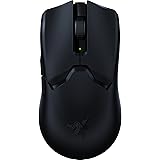The landscape of wireless gaming headsets is an ever-evolving battleground, where convenience invariably clashes with the pursuit of uncompromised audio fidelity. As highlighted in the accompanying video, the year 2025 finds manufacturers pushing boundaries, yet critical trade-offs are often necessitated by the very nature of wireless technology. While a wired connection typically reigns supreme for pure sound quality and microphone performance, modern wireless solutions have significantly narrowed the gap, offering unparalleled freedom and a suite of advanced features. Discerning gamers, often those with a significant investment in their digital experiences, are increasingly seeking devices that seamlessly integrate into complex setups, deliver immersive soundscapes, and offer comfortable wear during extended play sessions. This comprehensive guide delves deeper into the leading contenders, dissecting their strengths, weaknesses, and ideal use cases to assist in navigating this competitive market.
The journey towards an optimal wireless gaming headset experience is often paved with meticulous research. It is understood that a truly exceptional audio product must strike a delicate balance among pristine sound reproduction, ergonomic design, and a robust feature set. Furthermore, the nuances between sound profiles tailored for competitive first-person shooter (FPS) games and those designed for expansive single-player immersion are often critical. While high detail and precise directional cues are paramount for the former, the latter benefits significantly from a rich, impactful bass response that enhances atmospheric presence without compromising overall clarity. Not every headset, however, can adeptly adjust its sonic presentation to meet both demands, making careful consideration of EQ capabilities and driver design essential.
The Established Titans: Audeze Maxwell and SteelSeries Arctis Nova Pro Wireless
For a considerable period, the **Audeze Maxwell** and the **SteelSeries Arctis Nova Pro Wireless** have been regarded as the benchmark for premium wireless gaming headsets. Each unit, in its own right, has staked a claim to supremacy, albeit for distinct reasons. The Maxwell, priced at either $299 or $329 depending on the console variant, is primarily revered for its audio quality, a testament to its heritage as a product from an esteemed audio company. Its adoption of planar magnetic drivers, a technology involving an extremely thin diaphragm suspended between powerful magnets, sets it apart from the more common dynamic driver headphones. This design is known for delivering exceptional clarity, transient response, and a detailed soundstage that often captivates even the most scrutinizing audiophile. However, users are advised to handle these under 500-gram headsets with care, as the delicate drivers can be susceptible to damage from abrupt impacts.
Despite its sonic prowess, the Maxwell is not without its peculiarities, particularly regarding its feature implementation. Its Bluetooth functionality, for instance, operates without manual source switching, automatically prioritizing phone connections, which can disrupt game audio at inconvenient moments. While numerous firmware updates have been deployed since its release over two years ago, some users, including the reviewer, prefer older versions due to concerns about tuning alterations and the irreversible nature of recent updates. Furthermore, the microphone, though equipped with AI-driven background noise cancellation, is frequently cited as a low point, sometimes degrading vocal quality and exhibiting susceptibility to breath noises. However, for those prioritizing an unparalleled audio experience across all wireless listening needs, the Maxwell continues to hold its ground as a preeminent choice, provided active noise cancellation and simultaneous Bluetooth are not critical requirements.
Conversely, the **SteelSeries Arctis Nova Pro Wireless**, originally retailing for $349 but occasionally available for around $260, remains an undisputed leader in its comprehensive feature set. This unit, weighing 355 grams, has demonstrated remarkable durability, with first-generation models, such as the reviewer’s, enduring nearly two and a half years of rigorous use without signs of wear. Recent revisions have improved the earcup design, featuring smaller ANC knobs and thicker, more plush earpads for enhanced comfort, even for larger head sizes. The SteelSeries GG software, while occasionally buggy, complements the powerful Sonar software, which offers an astonishingly versatile parametric EQ and a vast library of game-specific presets. This allows for precise sonic tailoring, including the ability to load custom EQ profiles optimized for third-party earpad upgrades, further enhancing the headset’s adaptability.
The Arctis Nova Pro Wireless excels in multi-platform compatibility and convenience. Its base station features a tactile volume knob and offers extensive hardware control over settings, including a volume limiter. The system employs a proprietary Infinite Dual Battery System, where one battery charges in the base station while the other powers the headset, allowing for hot-swaps without powering down. This eliminates concerns about battery life interrupting crucial gaming sessions. Additionally, its simultaneous Bluetooth and 3.5mm aux in/out on the base station provide unique integration capabilities, notably with professional audio interfaces like the GoXLR, a feature that remains exclusive among current offerings. While the retractable microphone is generally considered “mid” for its price, its sound can be improved via Sonar’s EQ options, and its channel matching capabilities are critical for precise directional audio in competitive FPS titles. Ultimately, this headset presents a highly complete package for gamers who demand both advanced features and solid performance, especially if GoXLR support or active noise cancellation are high on their list.
Emerging Contenders: New Forces in the Wireless Headset Arena
The latest generation of wireless gaming headsets introduces several formidable challengers, each aiming to redefine expectations. The **Astro A50 X**, marking its Gen 5 iteration, emerges as a surprisingly robust contender, particularly appealing to console and home theater enthusiasts. Available at $349 for the X version and $299 for the standard, this 366-gram headset addresses many of the criticisms leveled against its predecessors. The key differentiator for the X version is its HDMI 2.1 pass-through, facilitating 24-bit audio and video directly through its base station for console integration. This system supports up to three simultaneous connections (two consoles and a PC), a unique capability in a market typically limited to two, with a dedicated button on the headset for effortless toggling. Coupled with its charging dock, this ensures that the 24-hour battery life is effectively infinite.
Beyond its connectivity, the Astro A50 X impresses with a highly natural-sounding microphone, often lauded as one of the best in wireless gaming headsets. Its flip-up-to-mute design, while potentially prone to floppiness if not fully engaged, offers simple and effective mic EQ presets. The headset provides excellent comfort over long sessions, despite the earpads’ internal opening being somewhat small. However, its complete reliance on wireless connectivity, lacking any 3.5mm aux input on either the headset or base station, positions it as a 100% wireless solution. Active noise cancellation is also absent, which may be a decisive factor for some users. Nonetheless, for those prioritizing multi-console integration, superior mic quality, and a robust feature set without needing ANC, the A50 X offers a compelling proposition.
The **Razer Kraken V4 Pro**, an aggressively priced entry at $399.99, attempts to distinguish itself with its Sensa HD Haptics. This technology introduces vibrations in the earcups, designed to enhance immersion by providing tactile feedback for in-game events. While this feature, especially when paired with the $300 Freya chair cushion for a full-body haptic experience, can be genuinely impactful in titles with full integration, its current support is limited to just 10 games, with 5 added recently. For other titles, the haptic feedback relies on a more generic interpretation, which can range from enhancing depth in survival horror games to creating an exhausting cacophony in fast-paced shooters like Black Ops 6. The 393-gram headset’s mic, while leveraging similar technology to the highly regarded Blackshark V2 Pro 2023 edition, suffers from a smaller capsule size due to its retractable design, resulting in a noticeable dip in quality. Furthermore, the V4 Pro lacks active noise cancellation, and its bulky design, which can generate significant clamping force, leads to comfort issues for extended wear, with heat retention from its plush pads being a common complaint. Ultimately, its premium price point, coupled with a limited haptics ecosystem and compromise in microphone quality, positions it as a niche product for specific enthusiasts.
The **ASUS ROG Delta 2 Wireless**, at a more accessible $229, offers an exceptionally lightweight design (317 grams) and impressive comfort, often accommodating even large head sizes. Its intelligent control layout, featuring separate volume wheels for 2.4GHz wireless and Bluetooth on opposing earcups, facilitates seamless audio mixing. The simultaneous Bluetooth and 3.5mm aux input on the headset itself provide versatile connectivity. A standout feature is its robust bass boost function, which delivers substantial low-end impact without distortion, a rarity among wireless gaming headsets. The microphone on the Delta 2 is another pleasant surprise, exhibiting a natural tone that surpasses both the Maxwell and Arctis in quality, further enhanced by lag-free side-tone. However, the headset’s full potential, particularly its EQ presets and bass boost, is primarily accessible via the Armory Crate software on PC, limiting console users to a default sound profile. While it performs admirably on PS5, its wired-only connection to Xbox controllers can lead to a suboptimal experience. Despite its excellent comfort, sound, and mic, the absence of a dedicated game-to-chat mix driver on PC and active noise cancellation, combined with its PC-centric software, suggests that its $229 price point might include an “ASUS tax,” making it potentially more competitive at a slightly lower cost.
Rounding out the new entries is the **Alienware Pro Wireless**, priced at $229.99 MSRP but often available for $199.99, which distinguishes itself as perhaps the most comfortable headset reviewed, weighing a mere 314 grams. Its plush, low-density foam earcups are often described as “pillows on your face,” promising exceptional comfort during prolonged gaming sessions. The battery life is also impressive, boasting 35 hours with active noise cancellation enabled and a staggering 75 hours without. Its sound profile, an exaggerated Harman curve with boosted bass and highs, is inherently enjoyable straight out of the box, aligning with a classic V-shaped tuning favored by many audio enthusiasts. This tuning provides a dynamic and engaging sonic presentation, whether ANC is active or not. However, the headset is hampered by a sparse feature set and limited software support via the Alienware Command Center, which is criticized for being buggy and sluggish. A notable omission is simultaneous Bluetooth and a hardware control for game-to-chat mix, despite having separate game and chat drivers in Windows. The microphone quality is regrettably “mid,” suffering from compression artifacts that detract from its otherwise decent tone. While comfortable and sonically pleasing, the Alienware Pro Wireless, particularly designed for e-sports, feels incomplete in its feature offering for its price, making it a difficult recommendation outside of specific comfort preferences.
Niche Solutions and Honorable Mentions
Beyond the core lineup, certain wireless gaming headsets carve out their own niches or offer distinct experiences worth noting. The **Turtle Beach Stealth Pro**, for instance, was lauded for its exceptional directional imaging in FPS games, particularly Call of Duty, providing a competitive edge through precise sound cues. However, its overall feature set and comfort were ultimately surpassed by the Arctis Nova Pro Wireless, especially after custom earpad options became available. Concerns were also raised about its build quality, a common critique for Turtle Beach products, though firmware updates did address some initial jankiness. Its open-back design, a rarity in wireless gaming, offers a unique spaciousness but comes with the inherent disadvantage of sound leakage, making it unsuitable for shared environments.
The **Corsair Virtuoso Max**, at a flagship price of $329.99, was found to fall short of expectations, as detailed in a separate, more thorough review. Its offering did not quite align with the premium cost, struggling to compete with the feature-rich and sonically superior alternatives in its category.
A surprising and innovative entry comes from **SteelSeries** with their **Arctis GameBuds**. These true wireless earbuds incorporate 2.4GHz wireless connectivity specifically for gaming, blurring the lines between lifestyle audio and dedicated gaming peripherals. Their tactile buttons and comfortable fit, even for small ear canals, make them suitable for both gaming at a desk and casual use on the go. While their sound quality is comparable to high-end true wireless earbuds like the Sony XM5s, they exhibit slightly less bass response and less effective active noise cancellation. The microphones are understandably inferior to boom mic solutions, but the presence of side-tone is a thoughtful addition. At $160, these GameBuds present a compelling proposition for those seeking a highly portable, dual-purpose audio solution, especially if a dedicated boom mic is not a primary concern, effectively serving as both a lifestyle and a wireless gaming headset.
Navigating Your Choices in High-Performance Wireless Gaming Headsets
When selecting a high-performance wireless gaming headset, the decision often hinges on prioritizing specific needs, as no single product definitively excels in every conceivable metric. If the ultimate pursuit is uncompromised audio fidelity for all wireless listening, with less emphasis on active noise cancellation or simultaneous Bluetooth, the Audeze Maxwell remains a formidable choice, despite its “mid” microphone. Conversely, for a truly feature-rich ecosystem, extensive console compatibility, hot-swappable batteries, and crucial integration with professional audio mixers like the GoXLR, the SteelSeries Arctis Nova Pro Wireless continues to set an exceptionally high bar, making it an ideal choice for the versatile gamer with an elaborate setup.
For console enthusiasts and those valuing superior microphone performance above all else, the Astro A50 X emerges as a compelling option, particularly the X version with its HDMI 2.1 pass-through for an integrated home theater experience. Its ability to manage three simultaneous console/PC connections is unrivaled, offering seamless transitions for multi-platform gamers. However, if PC gaming is the primary focus, and an excellent microphone, exceptional comfort, and a robust bass response are desired, the ASUS ROG Delta 2 Wireless offers a strong, albeit PC-centric, package at a competitive price, provided active noise cancellation and a dedicated chat mix driver are not essential. The Razer Kraken V4 Pro, while visually striking with its haptic feedback, caters to a very specific niche; its high cost and limited full haptic integration make it a specialty item rather than a general recommendation for a comprehensive wireless gaming headset. Lastly, while the Alienware Pro Wireless offers unparalleled comfort and an enjoyable out-of-the-box sound profile, its limited feature set and software issues temper its overall value proposition, suggesting a need for further refinement in future iterations.









